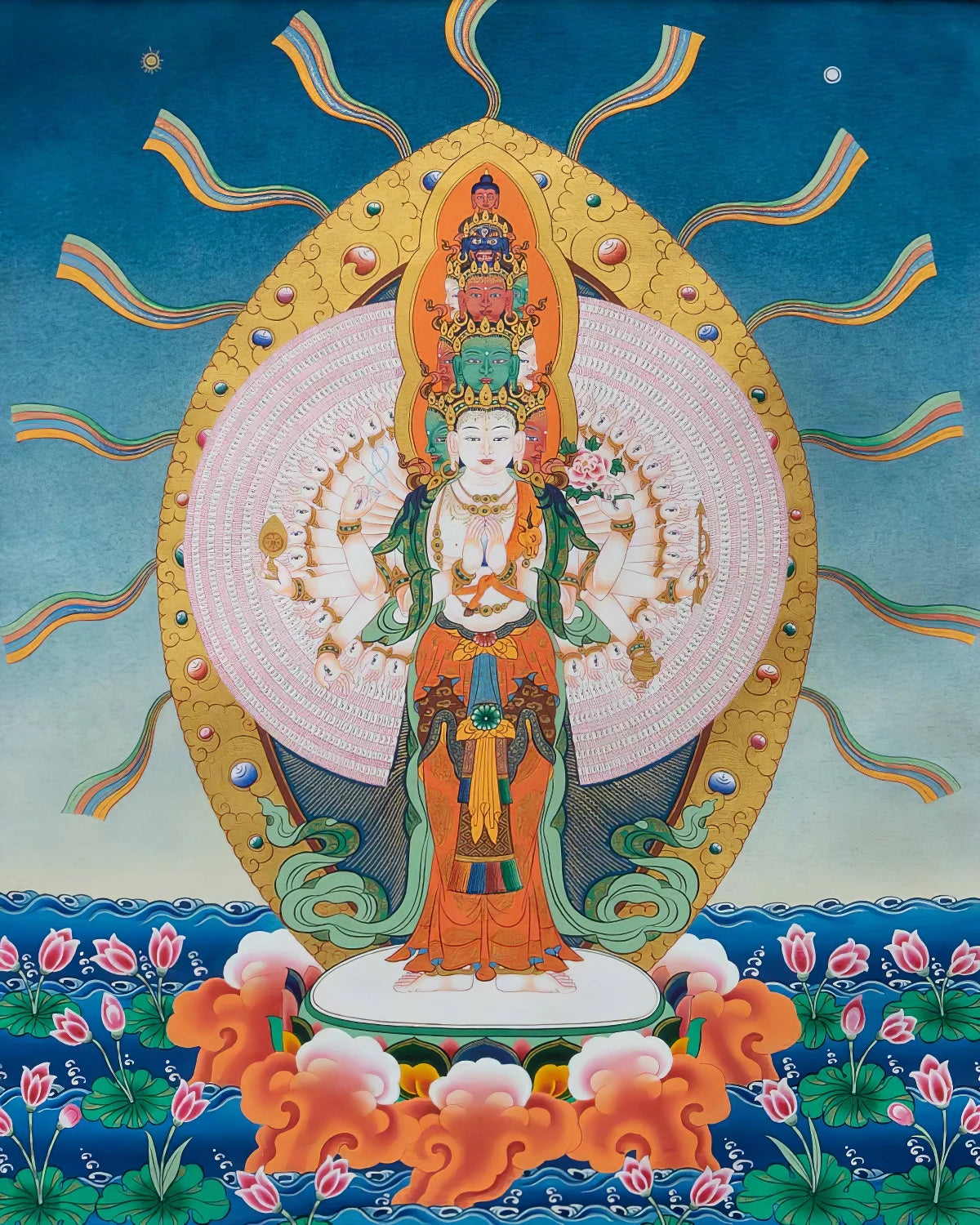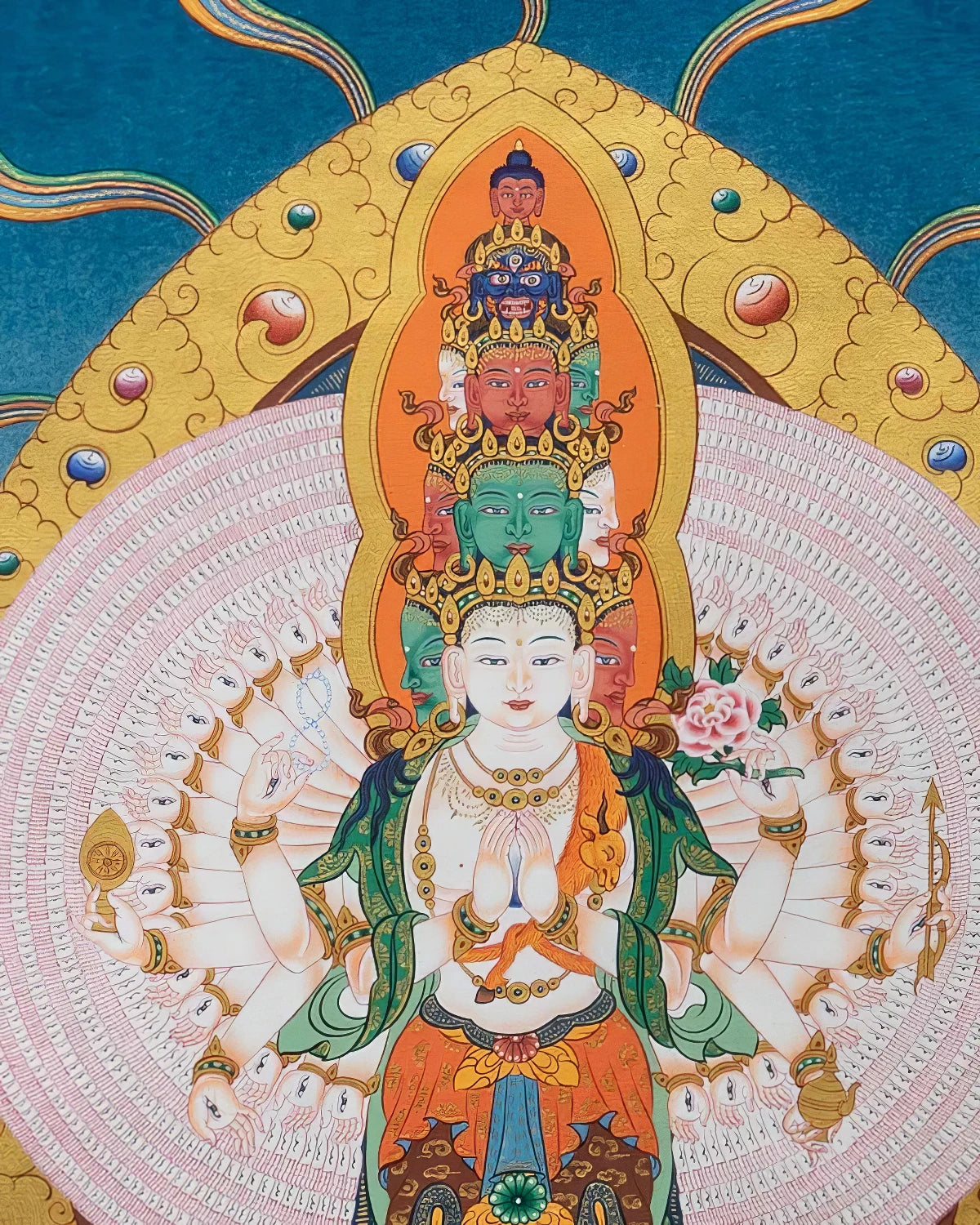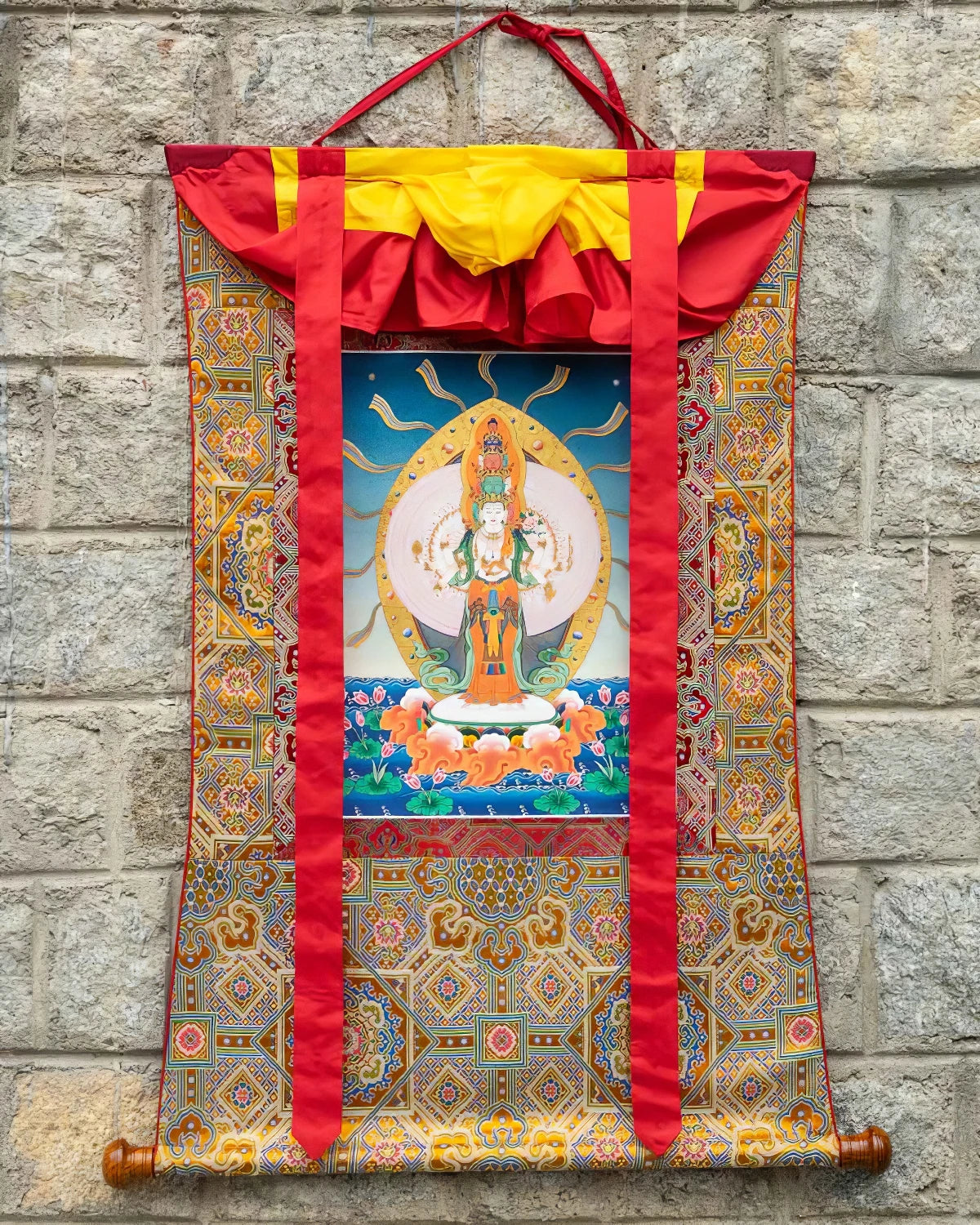


Thousand-Armed Avalokiteshvara
Avalokiteshvara is the personification of all the compassion experienced by beings, both enlightened and those striving for enlightenment. According to Buddhist mythology, this particular form of Avalokiteshvara emanated when a more primordial form – the four-armed Avalokiteshvara – swore a pledge that he would dedicate his entire existence to guiding beings from the paths of delusion. So intense was his motivation that he wished for his head to split into a thousand pieces if his striving waned in the least. As time passed however, he came to realize the depth to which beings were overcome by ignorance, and the enormity of the task he had himself sworn to dampened his great zeal. At that very moment, his head split into a thousand pieces in accordance with his own prayer. Out of compassion, Buddha Amitabha brought him back to life, giving him eleven new heads, and blessing the thousand pieces into which Avalokiteshvara’s former head had split, which each turned into an eye, a hand, and a leg.
He is depicted here with his thousand arms, each with an eye on the center of the palm. Of his eleven heads, ten are peaceful, signifying that generally he demonstrates his compassion through peaceful deeds, while one is wrathful, representing that sometimes compassion is manifested through coercive and violent means. His outstretched arms represent his great desire to reach out to the beings wandering in samsara, while the eyes on each hand represent his perfect clarity and wisdom.
The thangka comes framed in a traditional silk brocade border.
Craftsmanship
Choose options




